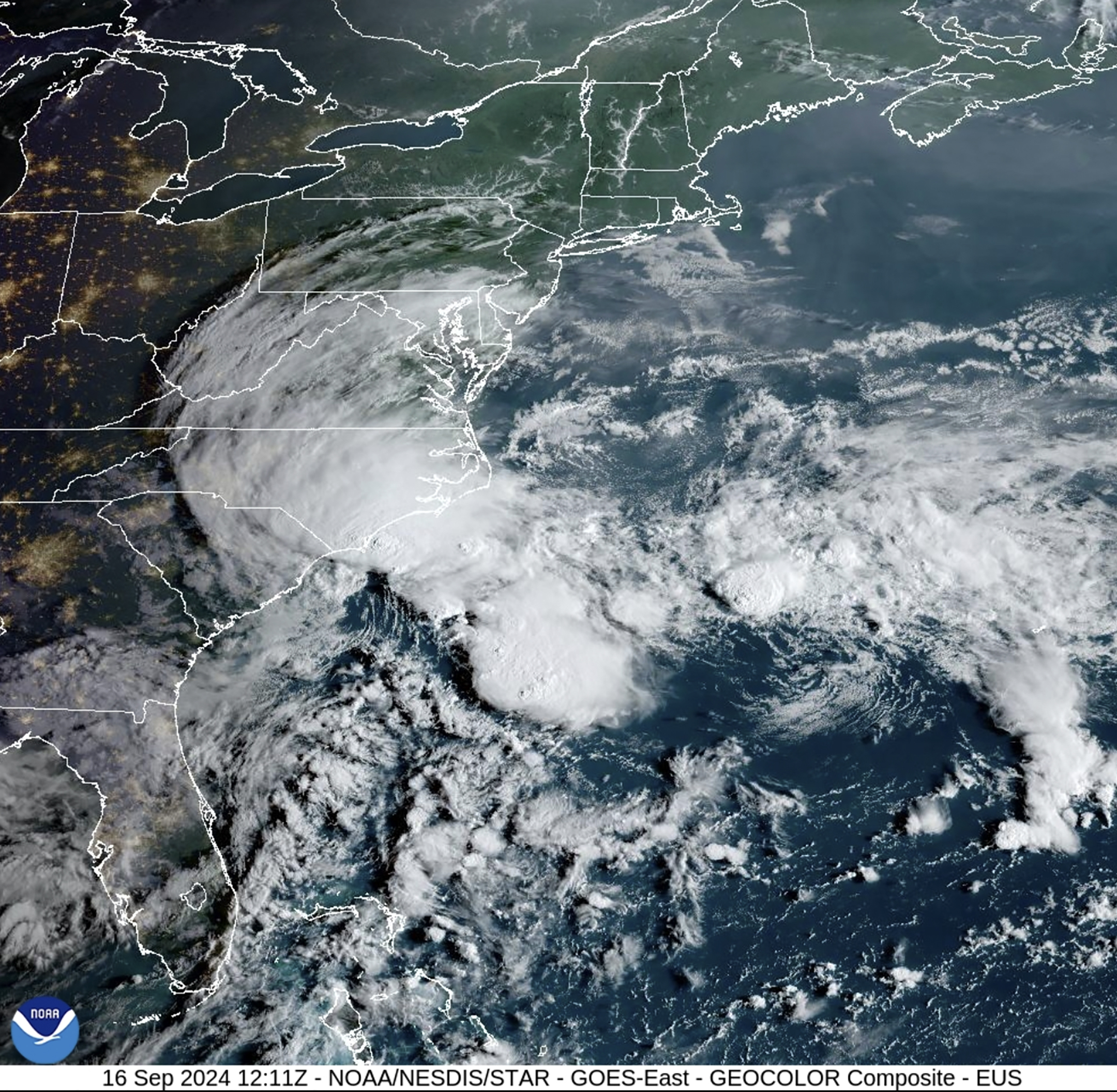The center of the storm system was near the South Carolina coast Monday afternoon, moving inland, the U.S. National Hurricane Center said. Strong winds were spreading onshore and dozens of roads were flooded. Known as Potential Tropical Cyclone No. 8, the system never organized enough to become the eighth named tropical storm of the season, Helene.
But no matter its classification, the storm prompted school closings, including Coastal Carolina University, and flooded areas south of Wilmington, North Carolina, with more than a foot (30 centimeters) of rain while nearby Wrightsville Beach had a wind gust of 65 mph (105 kph).
In Brunswick County, North Carolina, flooding reached waist high in areas around the courthouse, the Sheriff's Office said. About 15 miles (24 kilometers) away in Carolina Beach, blocks of the city were covered with a few inches of water and dozens of vehicles had floodwaters up to their doors as officials urged people to stay home. Radar estimated up to 18 inches (46 centimeters) of rain fell in the area.
According to North Carolina Gov. Roy Cooper's office, building and road damage was reported in Brunswick and in New Hanover County, where Wilmington is located. In a news release, the governor urged people in storm areas Monday night and Tuesday to stay off the roads.
A tropical storm warning was in effect for parts of the coasts of North Carolina and South Carolina for about 24 hours before it was canceled Monday afternoon.
The low-pressure system was near the South Carolina coast about 100 miles (156 kilometers) northeast of Charleston on Monday afternoon. It had maximum sustained winds of 35 mph (55 kph) and was moving to the north-northwest at 7 mph (11 kph), forecasters said.
Late Sunday night, forecasters said the system had a chance of becoming a tropical or subtropical storm, but it then became less organized, with the strongest winds in outer rain bands instead of near the center, said Carl Morgan, a meteorologist at the National Weather Service's office in Wilmington.
"There are still strong winds out there. They just not concentrating near a center," Morgan said.
In an updated hurricane outlook last month the National Oceanic and Atmospheric Administration was still predicting a highly active Atlantic hurricane season thanks to near-record sea surface temperatures and the possibility of La Nina. Emergency management officials have urged people to stay prepared.
The storm was expected to dump 4 to 8 inches (10 to 20 centimeters) of rain in northeast South Carolina into southeast North Carolina and up to 10 inches (25 centimeters) in isolated spots, with smaller amounts expected across the remainder of North Carolina through Tuesday, according to forecasters.
Over much of Virginia, 1 to 3 inches (2.5 to 8 centimeters) of rainfall, with locally higher amounts, were expected from Monday night through Wednesday. The hurricane center predicted the rainfall could lead to isolated and scattered flash and urban flooding, as well as minor river flooding.
The system will likely dissipate over the Carolinas by late Wednesday, forecasters said.
Elsewhere in the Atlantic, Tropical Storm Gordon weakened to a depression as it swirls through open ocean waters. Gordon could either dissolve in upcoming days or strengthen back into a tropical storm, forecasters said.
